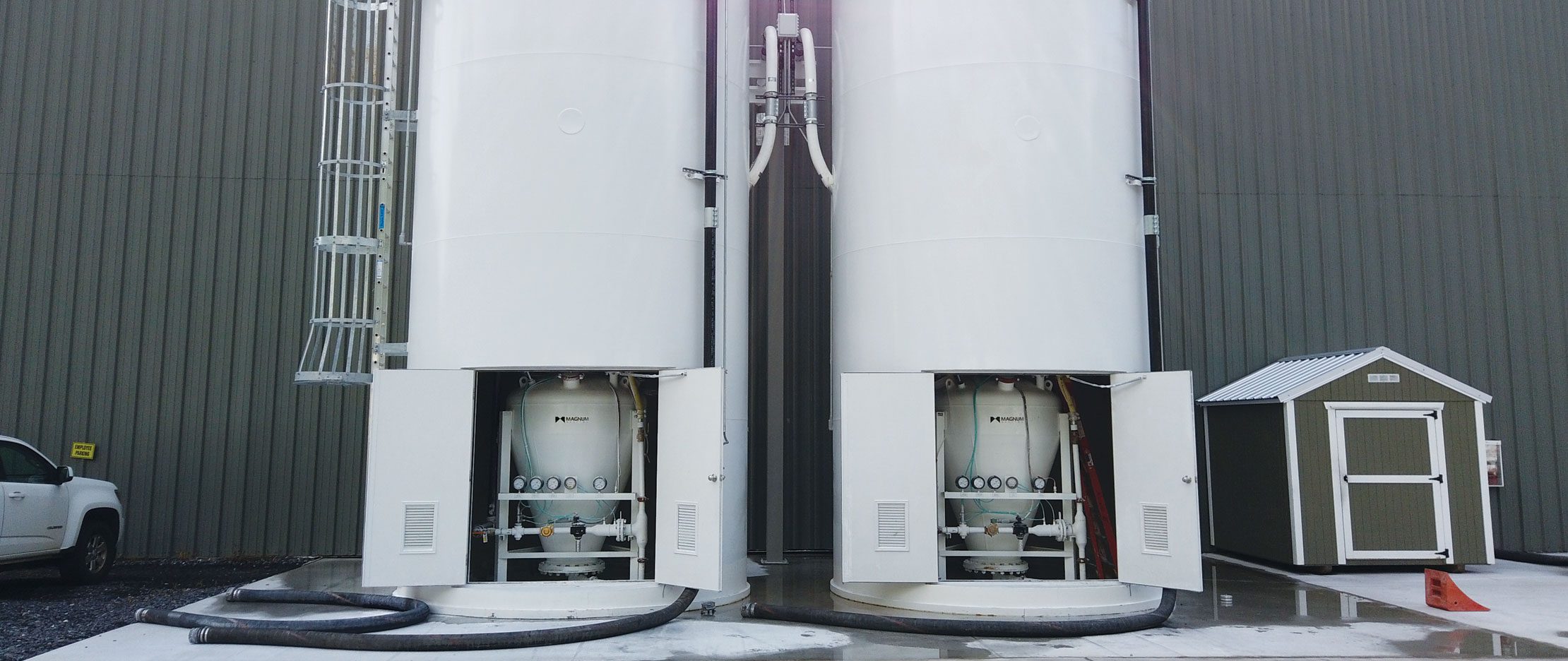

As an industry that heavily relies on accurate, efficient and durable machinery, pneumatic conveying and packaging require a keen focus on proper installation. Onsite installation in the pneumatic conveying and packaging industry is an often-overlooked component that can make or break a project. Joel Sawalich, Special Projects Manager at Magnum Systems, recently shed some light on the critical role of onsite installation and its complexities.
"One of the things we're going through right now is that the customer thought a lot of the equipment would show up preassembled because our drawing shows them all stacked up,” says Joel. “But there's a limit to how much we can preassemble in a way that is safe to ship without bouncing down the highway for 400 miles or so unsupported."
Joel highlights the importance of clear and open communication between the customer, the contractor and the machinery provider. Misinterpretations can lead to unrealistic expectations of how the equipment will arrive and the work needed in the field.
Communication is Key
Learning from past experiences, Joel emphasizes the importance of communication and avoiding assumptions during installation. He cites a recent project with one of our customers as an example where a lack of communication and less experienced contractors of pneumatic conveying equipment led to issues and delays.
"We always try to communicate to the customer that installation supervision is or is not included,” says Joel. “A lot of times customers have a contractor they know well and who are authorized to be in the plant and the customer might decide to just hire them."
Despite this, Joel emphasizes the benefits of having Magnum Systems present during installation.
"We would still recommend that we come in the first week and help get you lined up, and then maybe come in for a week sometime in the middle and finally a week at the end of install before your startup,” he says. “That way, we can make sure that adjustments are made as needed and to at least have some eyes on it in order to help."
There are times when communication can break down or, more commonly, there can be a few gaps in communication. Using onsite installation can help fill those gaps.
The Challenges of Offering Onsite Installation
One of the main challenges this industry encounters is the assumption of preassembled machinery delivery. Anticipating that systems will arrive ready-made and easy to install is a common misconception, as is the belief that onsite assembly is simple and straightforward. In reality, there are limits to how much a system can be preassembled for transport without risking damage.
“Onsite installation is not as simple as stacking up the pieces,” Joel explains. “Lifting a 20-foot-tall piece significantly differs from handling three six-foot parts. Reassembling them in the field requires a clear understanding of the process, which is why thorough reviews of drawings and explicit discussions about the arrival and field adjustments of the equipment are crucial.”
The Benefits: Is Onsite Installation Worth It?
Magnum Systems typically recommends onsite installation supervision to clients, but the response varies. As Joel mentioned earlier, some customers have long-term contractors who are familiar with the plant and its needs, allowing them to shoulder the responsibility. However, even in these cases, Magnum suggests popping in during the initial week, somewhere in the middle, and before startup to ensure that everything progresses smoothly.
But what happens when different contractors handle mechanical and electrical work? Or when contractors are unfamiliar with the specific equipment used in pneumatic systems? These situations highlight the need for professional supervision during installation, especially given the intricacies of this type of machinery.
The choice to have Magnum Systems onsite for the installation often rests with the customer. Some feel confident in their abilities or have a team that can handle the task. Others choose to save money by handling the installation themselves. However, the choice to bypass professional installation often leads to numerous calls and questions down the line.
“A lot of times I've been in a job site where they wired up our blower package, but they've crossed the lead, so the blower runs backward versus forward,” Joel says.
Being onsite can help head problems off at the pass so they don’t become bigger problems. While the speed of business often pushes for faster results, taking the time to properly communicate and plan for installation can save a considerable amount of time, money and frustration in the long run. In the pneumatic conveying and packaging industry, as in many others, an ounce of prevention truly is worth a pound of cure.
Have you heard?
Magnum Systems has a podcast series, AIM!
RELATED POSTS
Special Project Manager Shares Common and Doozy Pneumatic Conveying Challenges
You're Not Going to Fill a Juice Glass with a Fire Hose
Pneumatically Speaking in Terms of Efficiency, Compliance & Safety
Packaging Powder, Pellets and Flakes: How Not to Blow It
Automated Packaging Lines: Wringing Out Every Ounce
Related Post
Why Use a Single-Source Systems Integrator Like Magnum Systems?
What Are the Advantages of Dense-Phase Pneumatic Conveying?
Mastering Integration in Manufacturing with Magnum Systems: A Deep Dive Podcast Episode
The Secrets of Valve Bag Sealing: Expert Insights from Magnum Systems